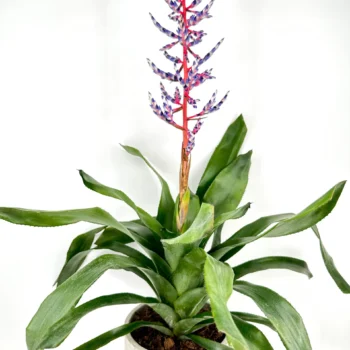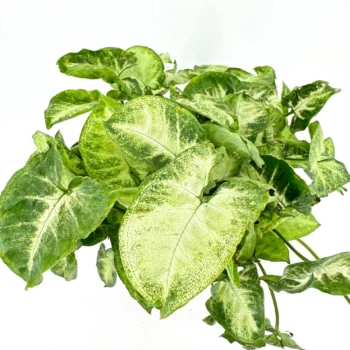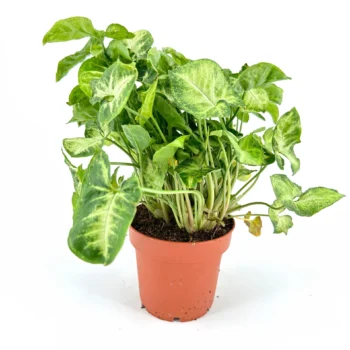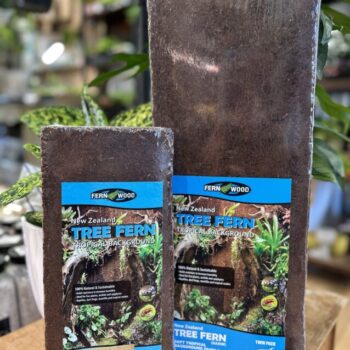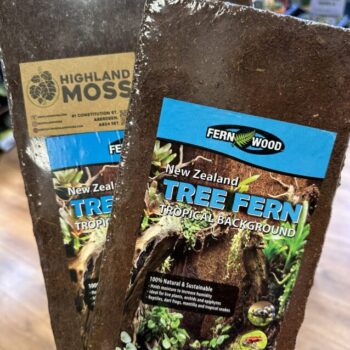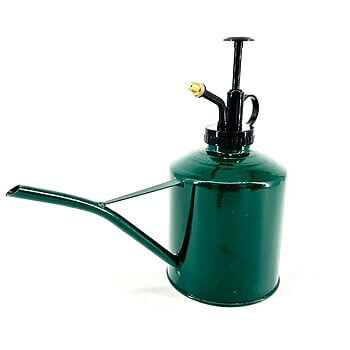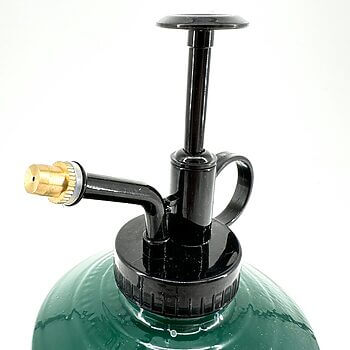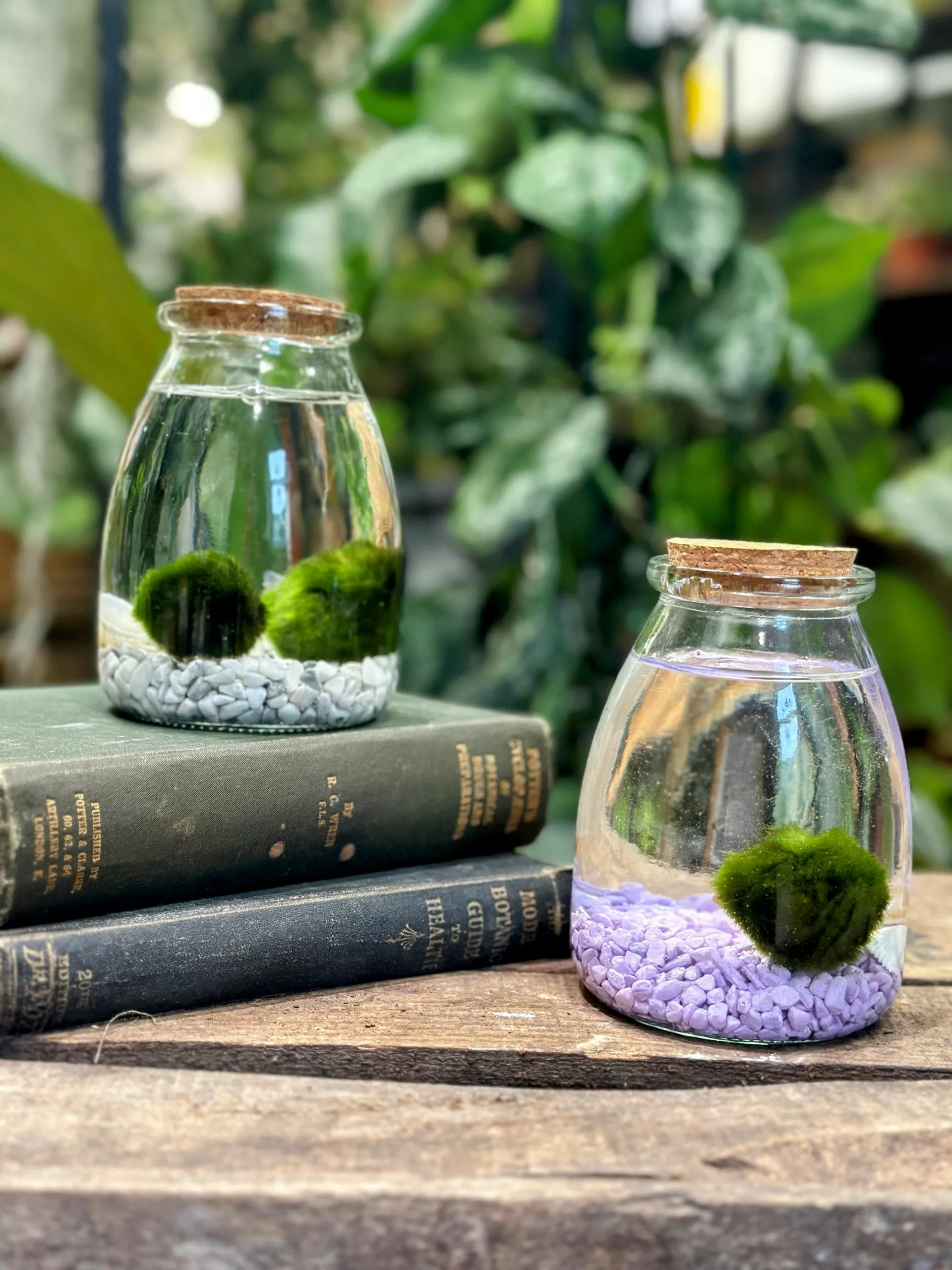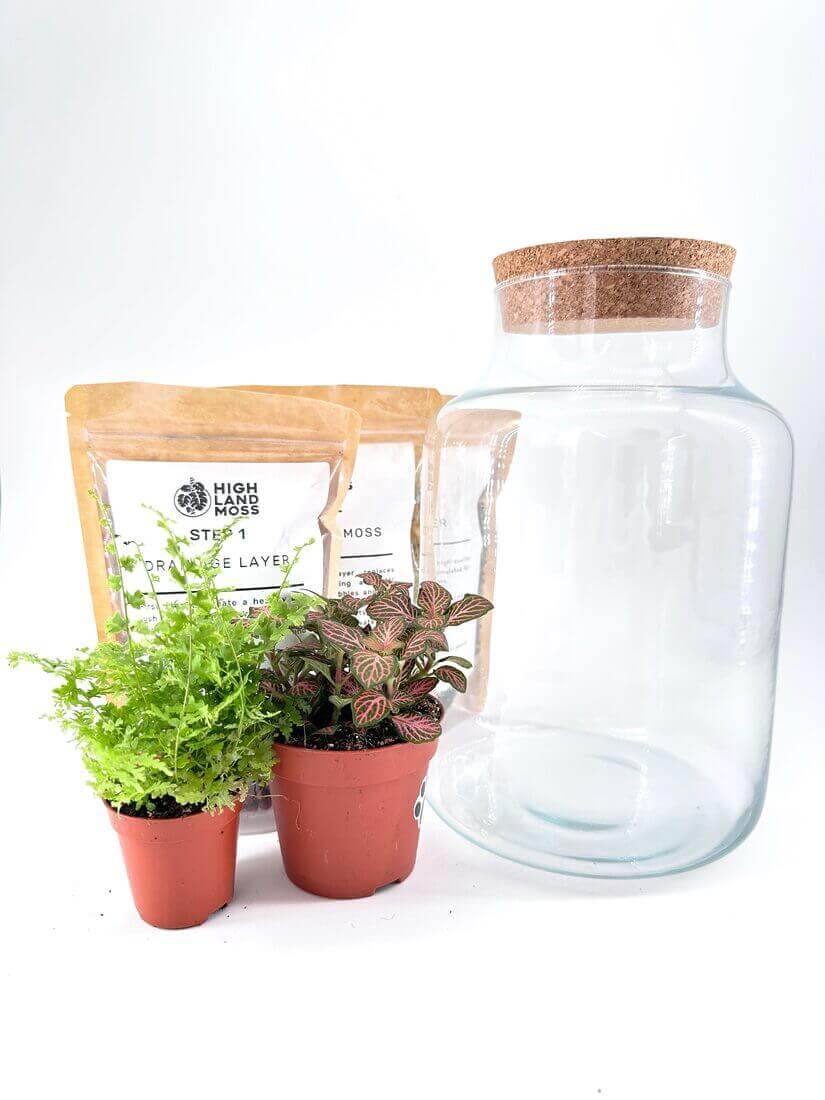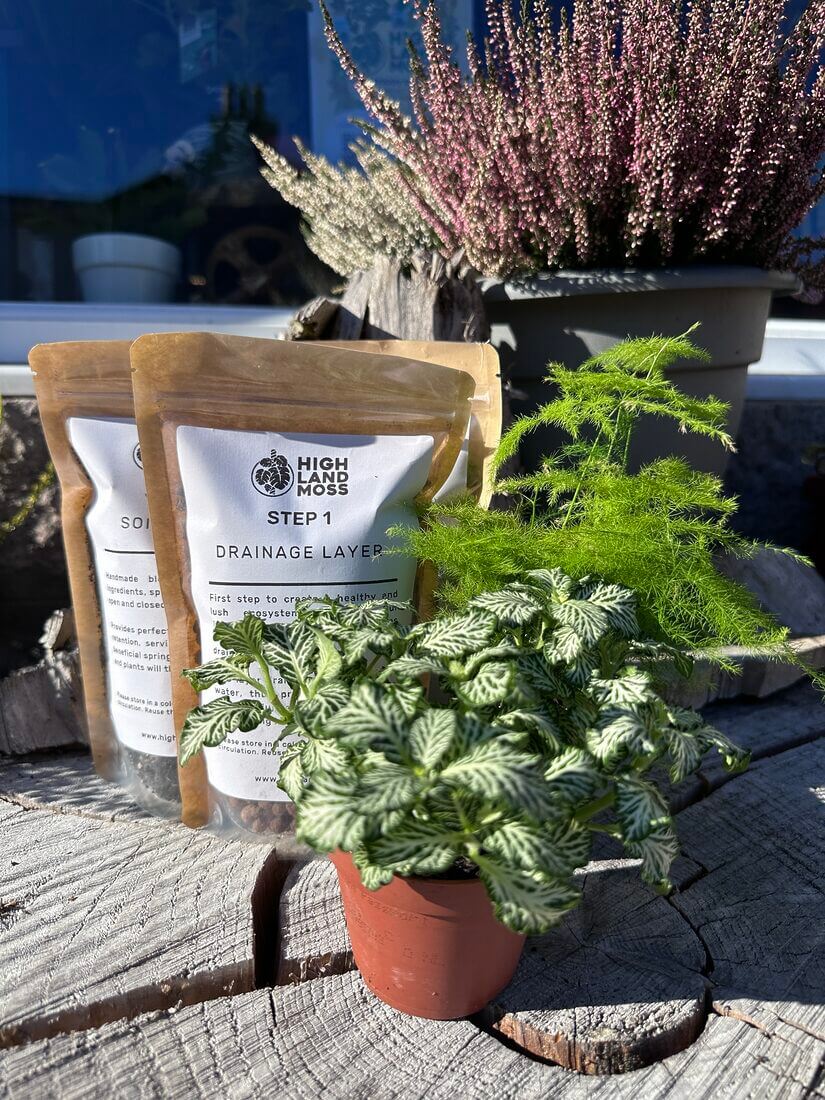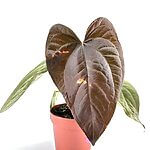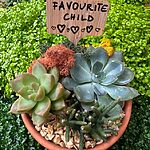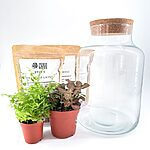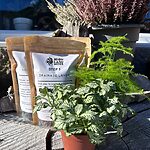About Epipremnum
Epipremnum, also known as Pothos, Devil’s Ivy, Money Plant, Taro Vine, Ivy Arum and Scindapsus to name a few, are one of the easiest houseplants to care for. They are perennial vines consisting of 15 different species that belong to the Araceae family (Arum). While Epipremnum is a flowering plant it is an incredibly rare occurrence both in the wild and in captivity. It is likely to only flower as a houseplant with the aid of hormone supplements, the last known spontaneous flowering was reported almost 60 years ago in 1964!
These plants can be found scaling trees and crawling along the floor in tropical forests all across Southeast Asia, Australia, New Guinea, and many of the islands throughout the Indian Ocean. In the wild, these epiphytes climb high into the canopy using their aerial roots and can reach extraordinary lengths of over 40 meters with exceptionally large leaves that span up to 3 meters long.
Alas, within the home they won’t reach such extraordinary lengths when restricted in pots, but their gorgeous heart-shaped foliage will still grow to lengths beyond 3 meters. This wonderfully versatile plant can be put in a wide range of conditions, it can be kept as a hanging plant, be trained up a moss pole, grow horizontally across mantels and windowsills, or even be kept trimmed back to stay compact and bushy. But be certain this tenacious plant will forever try its best to creep over, trail along, and cling on to anything between itself and the sunlight.
Light
Epipremnum grows best with an abundance of bright, indirect light, but will also happily tolerate shadier positions. Their ability to adapt to their light conditions is another reason why these plants are so easy to take care of. But like most houseplants, they will need to be placed out of direct sunlight as this will cause scorching of the foliage that won’t recover.
Humidity
Being a tropical forest plant Epipremnum thrives in high humidity environments, they are most comfortable with humidity levels around 50-70%. But with this being said, they are incredibly tolerant and adaptable plants and tolerate lower humidity environments. Despite this, your Epipremnum will still be very grateful for a regular misting once or twice a week.
Water
Epipremnum doesn’t like too much water! These plants prefer to mostly dry out between waterings. While they don’t mind being kept slightly moist, a little bit too damp and you run the risk of root rot.
As these plants are relatively drought tolerant, it is easy to spot the signs that your plant needs a drink. When the leaves start to curl and wilt you know for sure that it’s time to water. But be careful not to leave it too long, after the leaves start to curl you may start getting brown edges on the leaves meaning it’s lost too much moisture, so water as soon as you see the signs.
Epipremnum will prefer an infrequent heavy watering as opposed to little and often, this can be taken as a general rule for almost all houseplants (there are some exceptions) and will help to nourish the root system. Be careful not to overwater or allow your plant to be sat in a water tray for long periods of time as this can lead to root rot and is a difficult problem to rectify.
If you have watered your plant and it’s still wilting and looking a little bit sad this is a common sign of overwatering, you may also start to notice little black spots appear on the leaves. These are the initial signs of root rot for Epipremnums and will normally be shortly followed by the complete collapse of the plant.
Soil
Epipremnum is part of the Aurum family which means they thrive in a light and airy potting mix. This type of free draining soil is a must for these plants and will be the only way to avoid excessive moisture in the soil which will cause root rot.
The ideal potting mix for your Epiprenmum should be slightly acidic with a PH around 6.3 and consists of 1 part shredded bark (orchid bark will do the same job), 1 part vermiculite, 2 parts perlite and 4 parts sphagnum moss.
Pests & Disease
Even though Epipremnums are tough and resilient plants they can still suffer from pests. It is good practice to regularly check your plants for any signs of aphids, red spider mites, mealy bugs, and thrips. By checking regularly, you allow yourself time to prevent a full-blown attack.
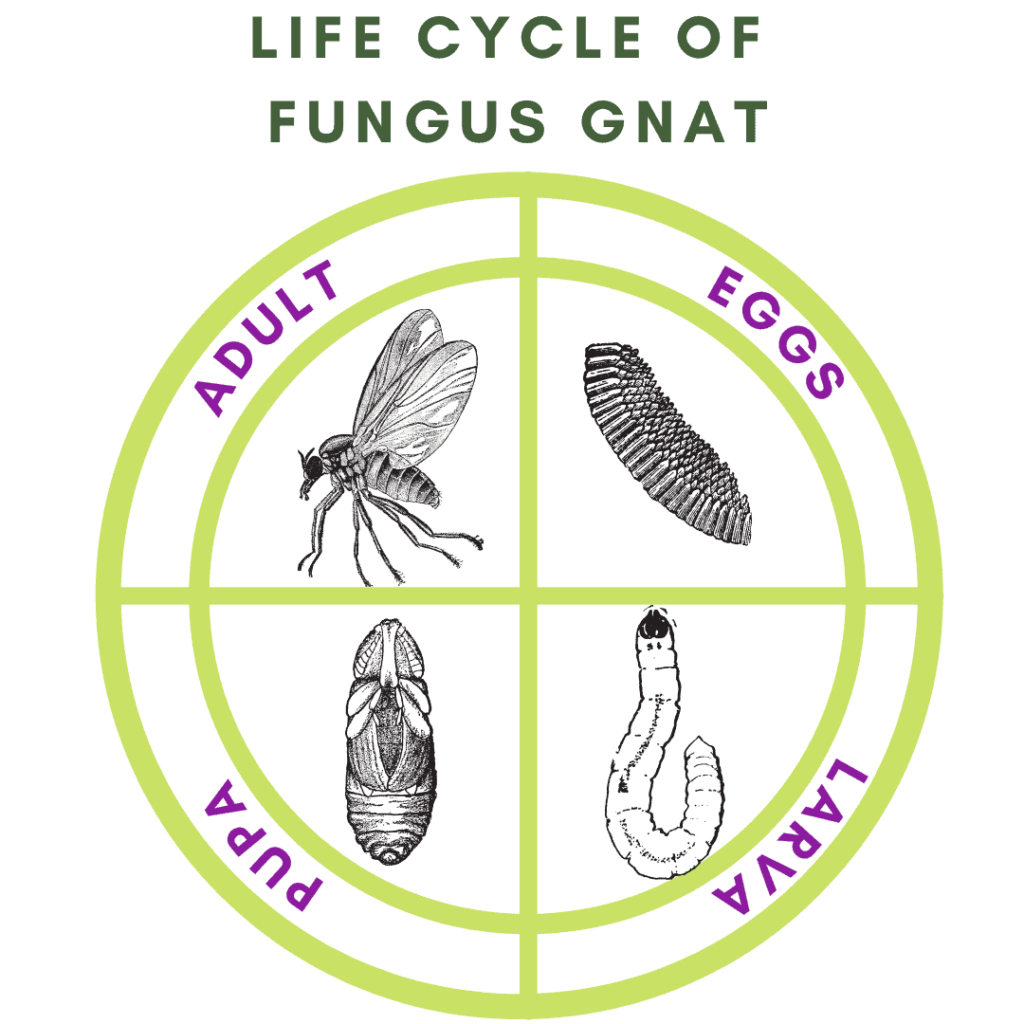
Check our video on homemade pest remedies or head over and read Fungus Gnat Fact Check and Home Remedies how to guide
Feed
These fuss-free plants require very little feeding. While they still require the basic building blocks of nutrients in equal parts, nitrogen-phosphorus-potassium, they will only need to be fed monthly or even bi-monthly. It’s best to use a liquid feed that can be diluted down and applied when watering.
Repotting
Potting your Pothos will only need to be done when the plant becomes root bound. If you suspect it’s time to repot, gently lift the plant out of its pot to inspect the roots. If the roots are like a tangled mat poking out of the drainage holes then probably time for a new pot.
Alternatively, if you are happy with the current size of the plant and pot you don’t have to change it, but the plant will still need some fresh soil;
- Gently take the plant out of its pot & wash off any soil clinging to the roots.
- Trim back the root system by roughly 25%. This will give the plant more space in the pot and will encourage new root growth.
- After trimming fill your pot ⅓ full with fresh potting mix and place the plant back in the pot.
- Fill the remaining space in the pot with your potting mix, and gently firm down.
If you are going for a new pot you could happily increase it by one or two times larger. The steps are similar to those above with only a couple of subtle differences;
- Gently take the plant out of its pot & wash off any soil clinging onto the roots
- You may need to gently untangle the roots if the plant is heavily pot-bound. (If the roots are not roughed up or untangled before repotting the plant will continue to grow like it is pot bound and will suffer even though it has been transferred to a larger pot)
- Check the root system for any signs of damaged or old and dying roots, these will be brown and usually a little bit mushy. These can be trimmed off to make room for new root growth.
- After trimming fill your pot ⅓ full with fresh potting mix and place the plant back in the pot
- Fill the remaining space in the pot with your potting mix, gently firm down
Considering Epipremnum is such a versatile plant, you may want to give it a new look. Repotting is a great time to install a moss pole. These plants look stunning on a moss pole as it doesn’t take them long to cover the entire surface and turn into a gorgeous and compact vertical shrub. Once they start climbing they will start to produce more aerial roots to help them stabilize on their new vertical journey. You can follow all the same steps as outlined above simply add the additional step of installing your moss pole before you fill the remaining space with your potting mix.
When you’ve finished and got your plant back in the perfect spot you can give it a thorough watering to settle the plant into its new pot. Keep a close eye on it for the first couple of weeks and then relax back into your normal watering and feeding schedule.
Pruning & Propagating
Epipremnum can be very rewarding plants and during the summer months can produce an abundance of growth. So regular pruning can help to keep all the foliage looking its best. Any side shoots or straying stems can be cut back to the base to help promote bushy growth on the main stems. This will also encourage new stems to shoot from the base, these can be trained towards the best-looking stems or just kept trimmed back.
REMEMBER – Always use clean and sharp pruning scissors!
Cuttings – If you prune back your Epipremnum at the node (this is the point on the stem where a leaf is attached), you will end up with a mass of great cutting material. Simply place your cuttings in a glass of rainwater and wait for up to 2 – 4 weeks to start seeing signs of new roots. You will need to regularly change the water to avoid algae forming. Once you have substantial root growth you can place the cutting into a small pot of Aroid mix
Keep a close eye on these small pots as they will dry out quickly!
You can also put your cutting straight into a jar with fresh sphagnum moss. This is probably the easiest way to propagate as it has the least steps involved. Simply take your cutting, find a jar or pot, preferably with no drainage holes, fill it up with fresh moss and nestle your cutting in the centre. Fill up the jar with water so the moss has been evenly watered and then drain out all excess water, making sure not to leave any at the bottom of the jar when standing upright. Now just keep an eye on your new cutting, checking the moss every couple of days to ensure it hasn’t dried out.
We’ve got all sorts of great moss you can use. Check them out here!
Troubleshooting & Tips
- Epipremnum requires a warm temperature. No lower than 12°C in winter and ideally between 15°C and 28°C for the rest of the year.
- If the tips of the leaves of your plant are turning brown this is a sign that the air is too dry and you may need to increase the ambient humidity level around the plant.
- If the leaves of your plant are wilting and/or turning brown, it means that the soil is too dry so more watering and misting will be required.
- If the leaves of your plant are yellow this is a sign of overwatering.
- If you notice the leaves on the plant are turning pale or yellowish colour this means that your plant is getting too much light.
- By pinching out the tips of the vines you will encourage more compact and bushier growth.
- If your plant has been around for quite some time and entering the more distinguished years of its life, it is a common problem for the plant to start producing bare and leafless vines. If this happens, you could either take cuttings to create brand new plants. Or you can cut back most of the plant’s vine back towards its base to give it a new lease of life. (Make sure to cut back to the nearest node to get the quickest results for re-shooting.
Toxicity
Epipremnum is harmful if ingested. Almost all parts of the plant contain toxins called Raphides. These toxins can cause oral irritation, difficulty swallowing and vomiting. So best to be kept out of the reach of children and pets.
Species

Epipremnum Aureum Neon
This gorgeously bright variety of Golden Pothos produces stunning neon yellow foliage. This plant can easily brighten up any room! With no variegation, this plant can thrive in low light levels and bring a bright streak to the darkest corner of your home.
Head Over To The Shop To Grab Yours Now!
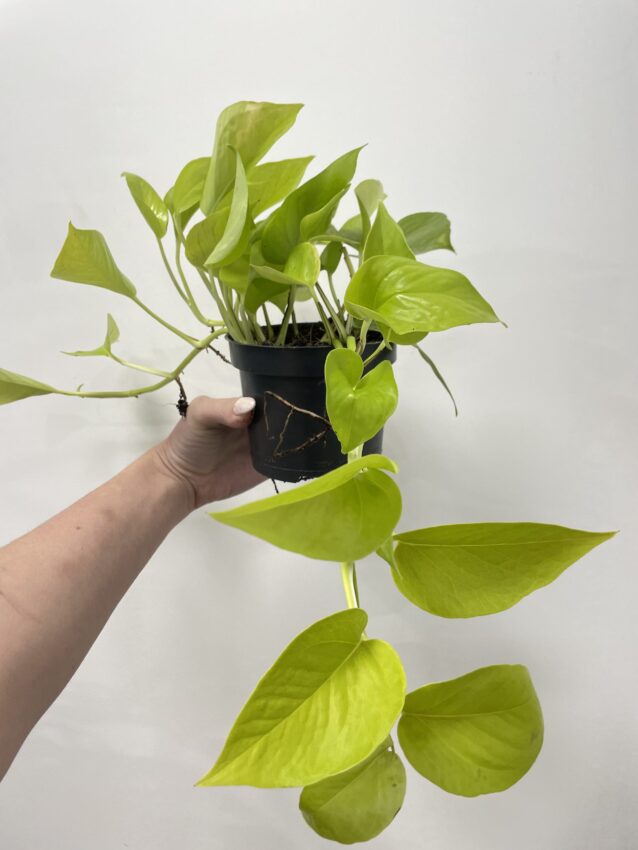

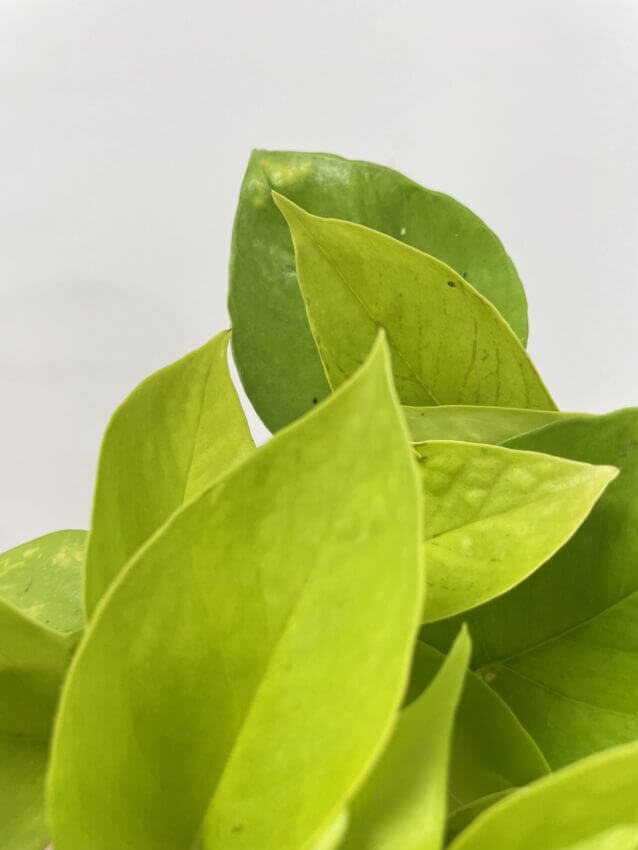


Epipremnum Aureum N’Joy
This eye-catching Pothos covered in striking splashes of white and green variegation is a great addition to all plant collections. This wonderful climbing vine will need a bright space to keep the variegation from fading, so will be suited to east or west-facing rooms.
Head Over To The Shop To Grab Yours Now!

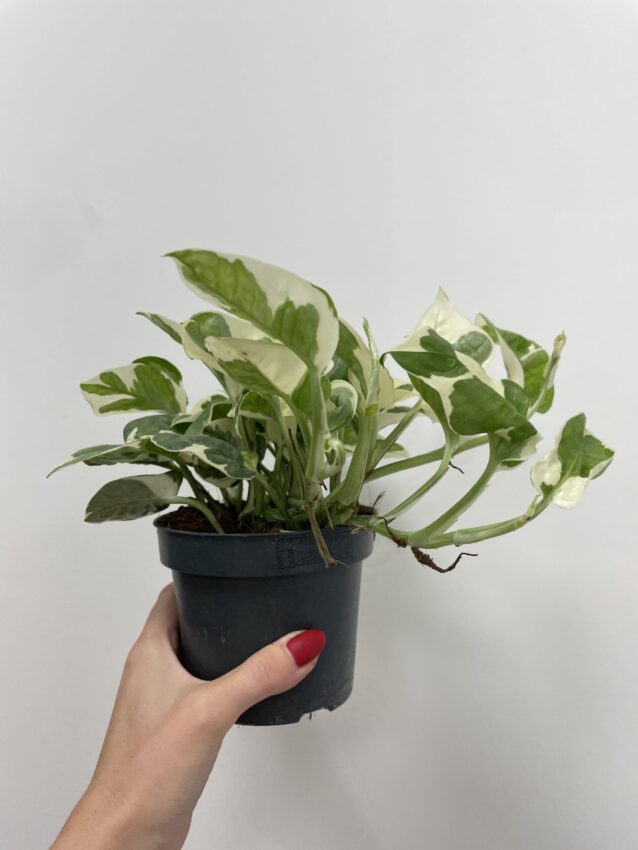



Epipremnum pinnatum Variegate
This plant falls on the rare end of the scale for Pothos and generally warrants a bit of a higher price tag. Rightfully so in my opinion, because this plant looks amazing! Its glossy dark green leaves which form into more of an arrow shape give you a real sense of the tropical forest it hailed from. Along with its white spots and strips of variegation as this plant matures, it can turn any space into a plant paradise. The hidden bonus to this plant is as it reaches maturity it will start to produce fenestrations(the holes/split leaves) which just elevate the overall look and in my opinion put it up there with the must-have house plants.
Head Over To The Shop To Grab Yours Now!

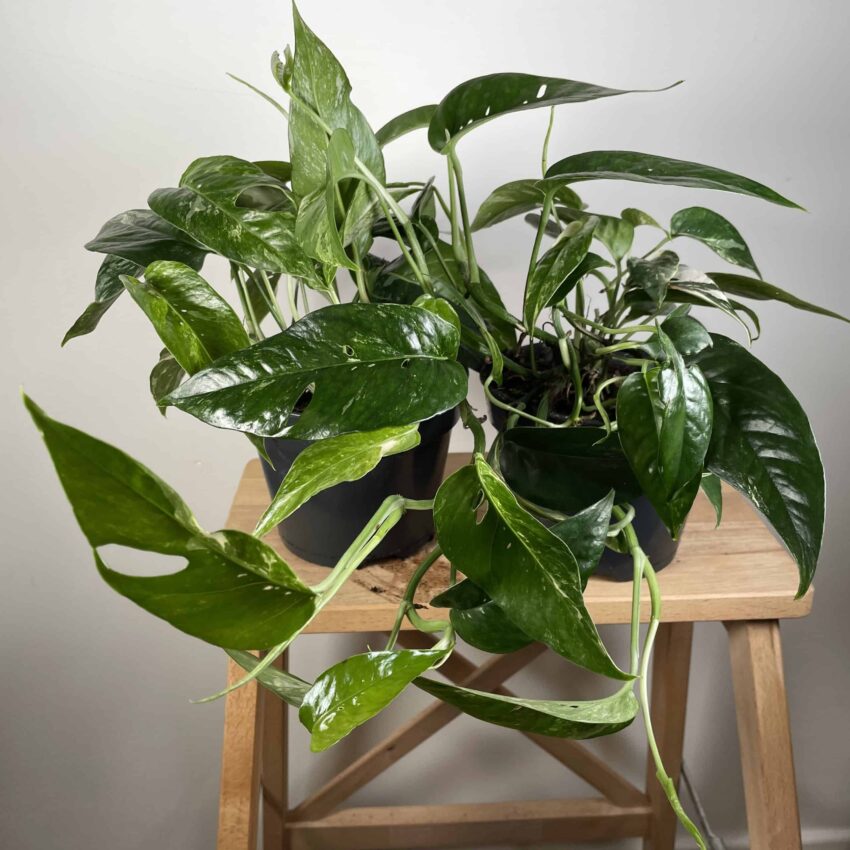
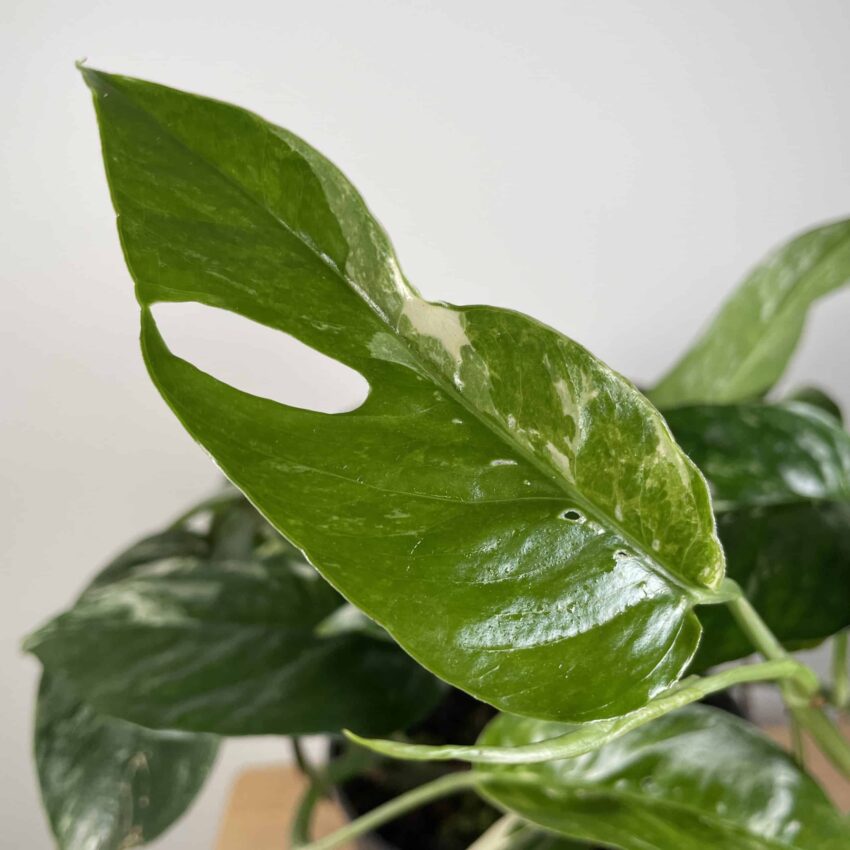
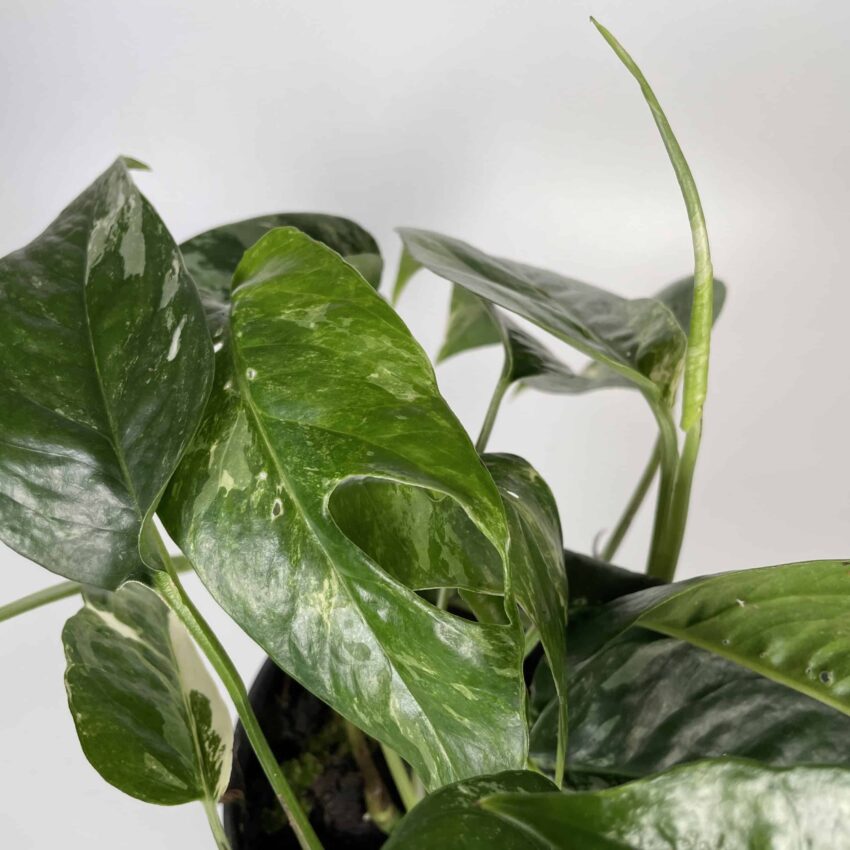

Scindapsus Marble Queen
Another beautiful variegated form of Pothos. These glossy, vibrant rich green leaves boast fantastic green and white marble-like variegation. Whether its leaves cascade down from a hanging pot or sent climbing up a moss pole this beautiful Pothos will elevate the look of any room. This is also one of the few Epipremnum that will retain almost all of its variegation even in low light conditions.
Head Over To The Shop To Grab Yours Now!
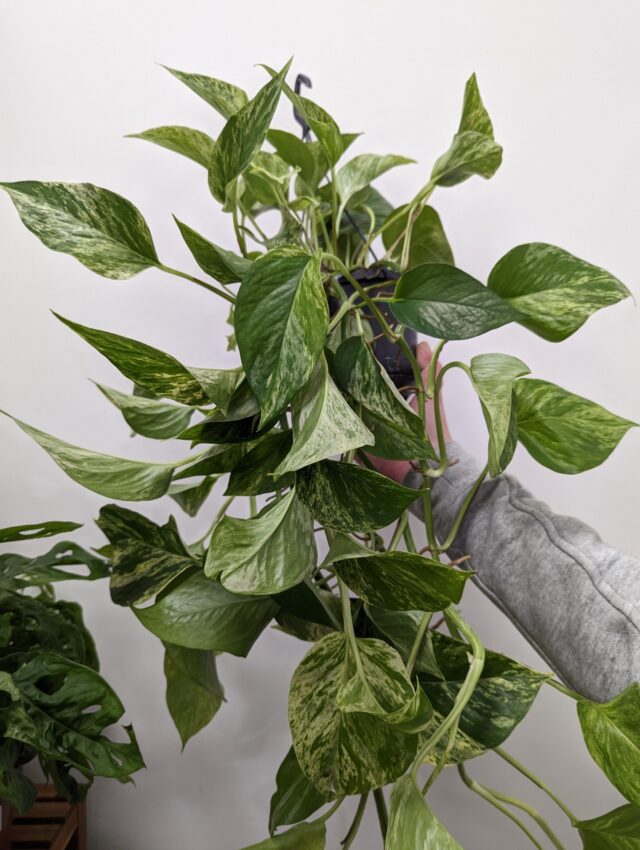

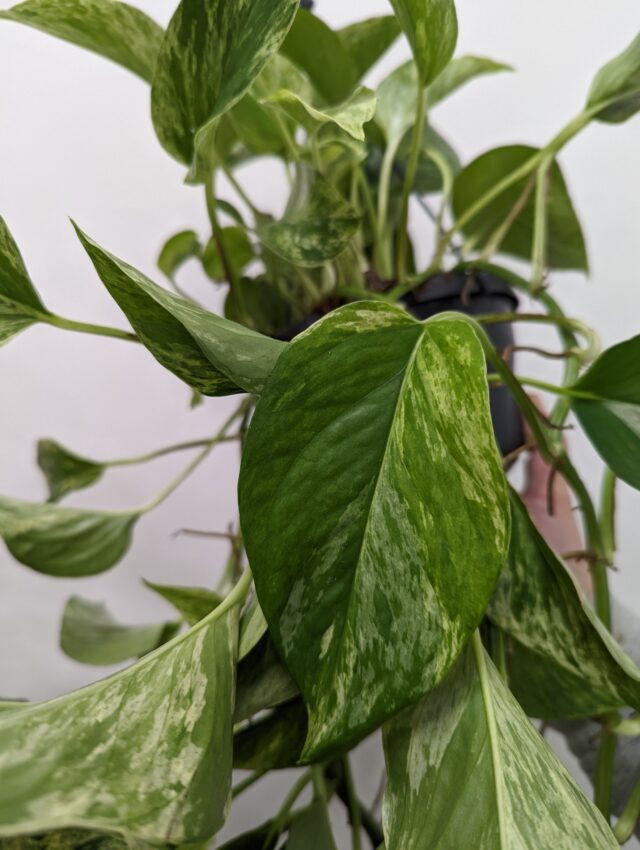


Epipremnum pinnatum ‘Cebu Blue
Originating from Cebu island in the Philippines this plant works best clawing its way up a moss pole. Its immature foliage creates a bluish-grey leaf that darkens to a richer green as the plant matures. As this plant establishes you can start to see a strong family resemblance to Monstera Deliciosa but with smaller and more arrow-shaped leaves. This becomes especially clear as the gorgeous fenestrations (the holes/split leaves) start to show themselves.
Head Over To The Shop To Grab Yours Now!
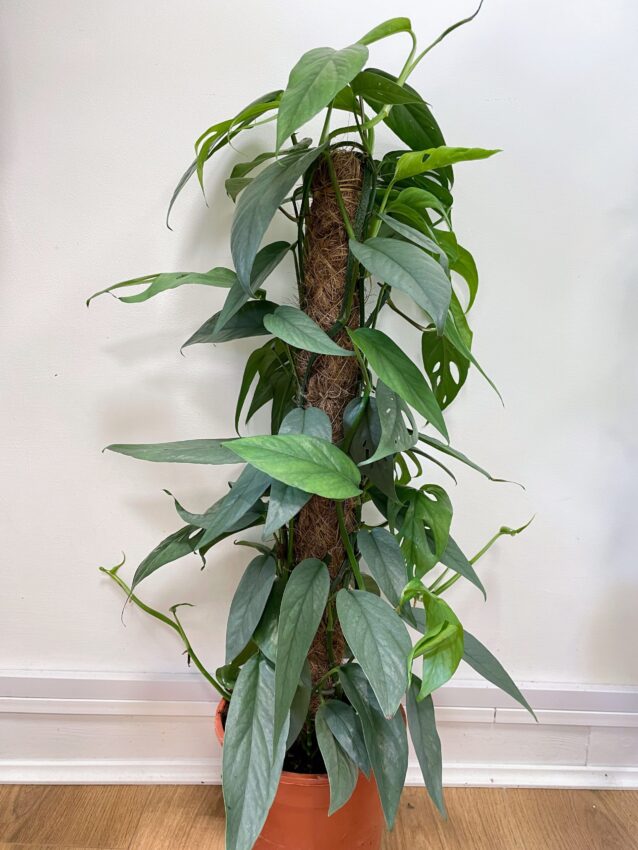


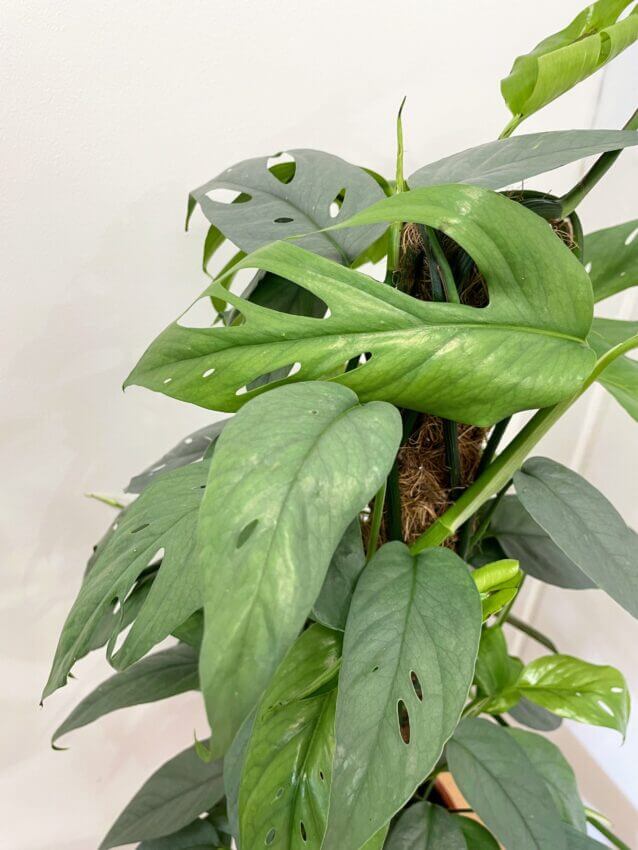

‘Monstera Peru’ Epipremnum Marble Planet
Also known as Monstera Karstenianum this plant creates wide, dark green foliage with even darker green veins that give the leaves that highly textured look. This plant will stop you in your tracks, it gives off visual vibes of a Monstera but acts more like a succulent storing an abundance of water in its almost leathery to-the-touch leaves.
Head Over To The Shop To Grab Yours Now!
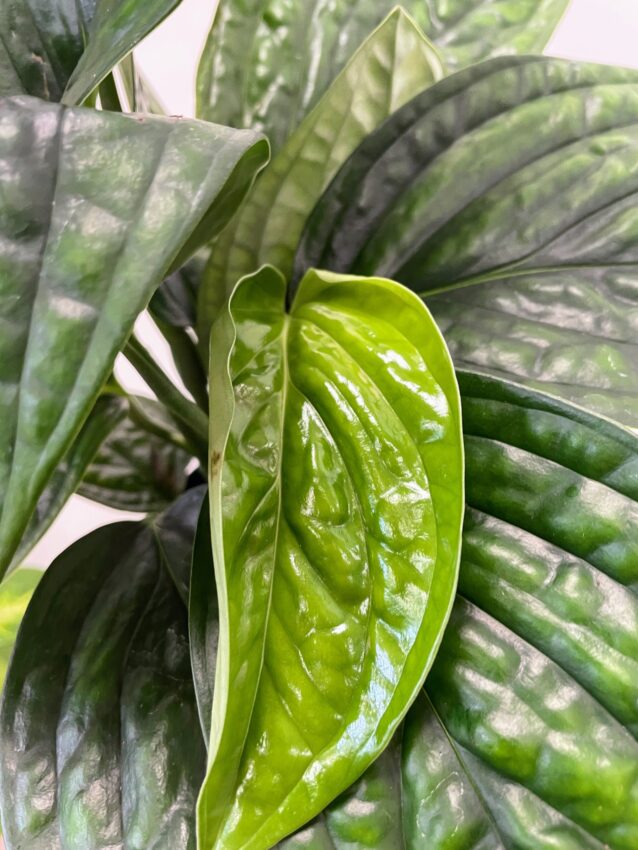
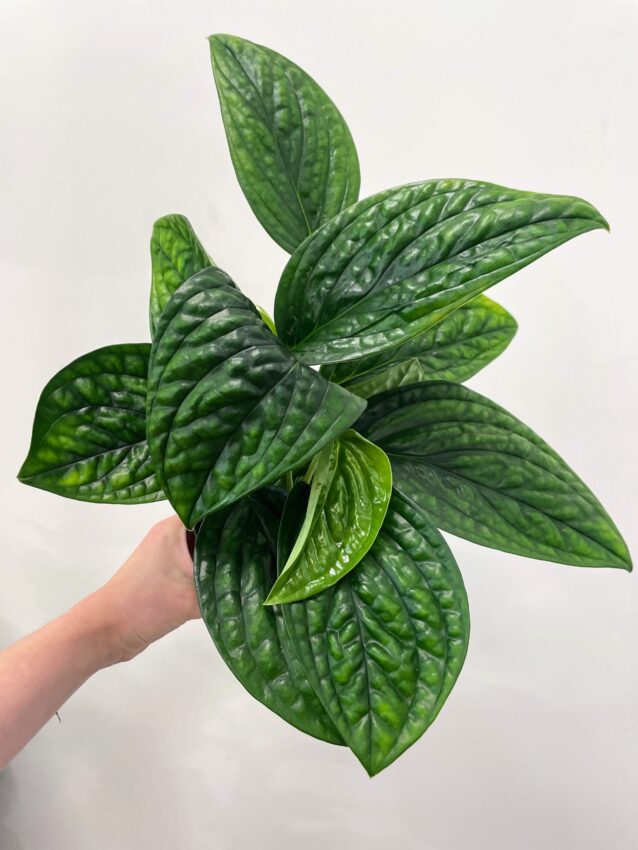
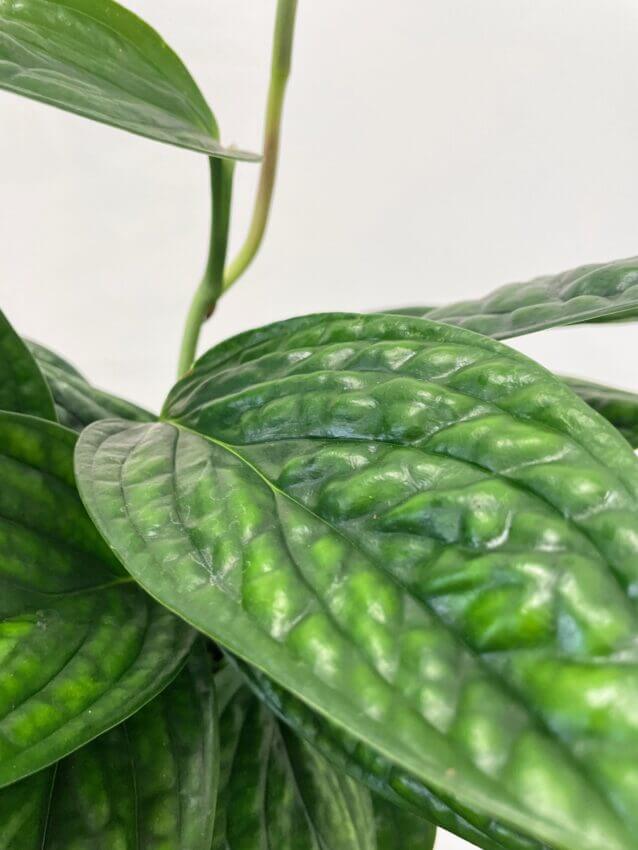
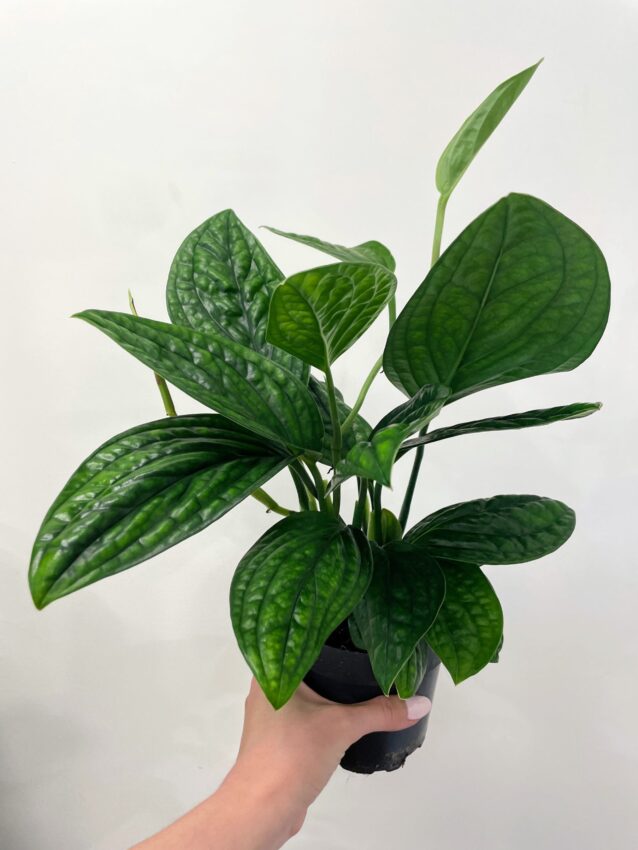
If you enjoyed this guide head over to Articles & Blogs to learn more or check out our YouTube for even more useful information!





